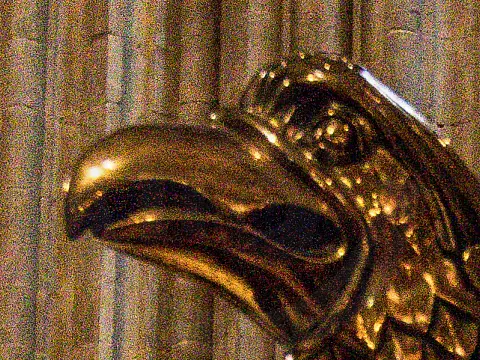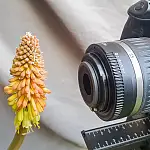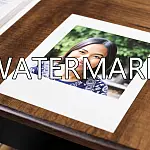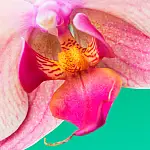How To Take Perfect Snow Photographs for Magical Winter ScenesCamera settings and tips to avoid dull, washed out photos in the snow. Take perfect snow pictures and capture magical winter scenes.
Snowfall can cause a huge frustration for those people who have to trudge to work, however, it can also provide some fun opportunities too, particularly for photographers. Here are 6 tips to help you take some perfect snow photographs during some difficult shooting experiences.
How to Photograph Colour in Snow
Shooting in a blizzard does not look that beautiful because there aren't any contrasting colours - the whole thing seems to be monotone in grey or white. You need something within the foreground that stands out against the snow, something with good vibrant colours.

Wait until the sky clears, and the snow stops falling and now you have got a crystal blue sky to shoot against. If the sun is refusing to pop out, then it could help if your subjects are brightly dressed. Scarves are an effective way of including a dash of bright red or green in the picture to offset the white backdrop.
Birds also are an excellent source of colour, however only the right birds. A gull, for example, will not photograph well in snow as there is no contract, however, a robin will be excellent. The red in its breast will stand out well against the snow.
Picking something with more colours can truly help pop the picture.
If it's still snowing and you want to get a shot of a few snowdrops, a good trick is to use something darkish within the background like a holly bush. This means the white snow shows up well against it.
Shooting white on white makes everything look like a snowstorm.
Camera Settings for Photographing Snow
While you can adjust white ballance and exposure in software, its always best to get the correct camera settings first as it'll make the post-processing task much easier.
How to Expose for Snow Properly
One of the crucial things with snow, which many of us have a lot of problems with, is making the picture seem like what your eyes are seeing. Your camera is going to get perplexed by the snow. You can use a "snow" scene setting if your camera has one, else simply notch up the exposure compensation on the camera. If the subject is just too dark against the snow, then +1 exposure compensation should do it. Don't worry if the snow overexposes a little, it can add to its look and stop everything from looking too grey.
When taking the shot, you'll need to check how dark the image is by checking the preview on your camera's screen. If it looks too dark, you'll need to compensate - you'll be able to do this with the exposure compensation feature of your camera, or by taking pictures in manual mode and setting everything up yourself.

Another method is to change the camera's metering mode. By default, most cameras are set to centre-weighted where they consider the majority of the scene before making an exposure. There are also partial and spot metering options that consider only the centre, and the pinpoint centre of the shot respectively and so will base exposure on this area. If that's where your subject is, the exposure will be set accordingly and you most likely may not need to adjust the exposure compensation.
Get the White Balance Spot on in Winter
White balance is all about the colour tone of a photo. Having the white balance too cold will make the photo a blue tone, whilst too warm will give a photo with an orange/yellow cast. Most of the time the camera's auto white balance settings do a great job determining the correct white balance setting to use, however, snow creates several problems for the camera. As a result, photos often look dull and grey, washed out and underexposed.
Some cameras have a scene selection mode which may include a snow setting. This mode gives the camera a heads-up as to what you are shooting and it does a better job than automatic scene selection.
For total control over the colour temperature and white balance, you may need to set this yourself. Some cameras can do a "white card" white balance. This is when you hold up a white card and take a photo, telling the camera that this card is white. It then uses the ambient light reflected in the card to work out the difference and sets the colour temperature accordingly.
If your camera does not have this feature, then you may have a setting for manual temperature control. This will be in the camera's menu and called something like temperature, colour, or K options. Check your manual for the correct procedure.
Don't forget to change back to auto mode after you have finished shooting in the snow.
One final option is to use post-processing software to correct the white balance. From software such as Lightroom, you can use a colour picker tool to select "white" and the software will attempt to correct any colour cast.
Snow Scene Composition
One of the best rules for photography is the rule of thirds, which means you section your image up into a three-by-three grid and compose your image along the lines. This rule applies to all photography.
You can also change your perspective. Shooting a snowman by lying on the ground will provide you with a sense that he is far bigger than he is. Likewise, when it comes to capturing a snowball fight if you're photographing kids - get low. If you're feeling courageous get them to throw snowballs at you just as you are taking the picture... just make certain your digital camera's up to it!
Packing the Right Gear for Wintery Conditions
If you are venturing out into the woods or city it might sound obvious or even silly to say but wrap up warm. Take a groundsheet blanket for lying on, gloves are essential to avoid cold hands and wellies can be useful to avoid wet feet.
Also, make sure you've got a full charge in your camera's battery and carry spares. Batteries do not last as long when they are cold, so you are most probably not to get quite as many shots out of one.
Just like a car windscreen, digital camera lenses can also steam up when removed from warmer bags. The subtle temperature changes may cause the lens to fog up so additionally pack a microfibre lens cloth to keep your lenses clear and clean.
A tripod is an invaluable piece of equipment for all landscape photography, and is crucial if you are photographing around sunrise or sunset. One fun thing about snow is that you can always "build a tripod" out of it rather than a snowman so at least that's one less thing to pack.
Plan Your Shot Before You Walk Over It
If you're strolling through the snow taking pictures, you will probably not want your footprints in the picture, so think about where you want to take your photo before you walk into and all over the shot. This way you have got pristine snow without your footprints in it.

Finally, wrap up warm - I've been out on shoots in the snow before and it can be very hard to keep at it! Be sure to wear a hat, scarf, gloves, and a warm coat. Use thermal warmth packs to keep your hands warm.










